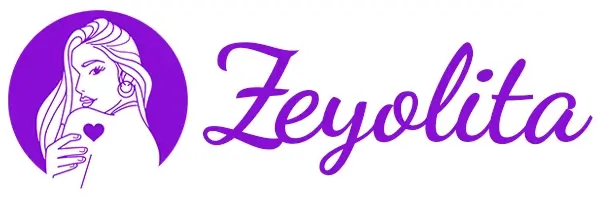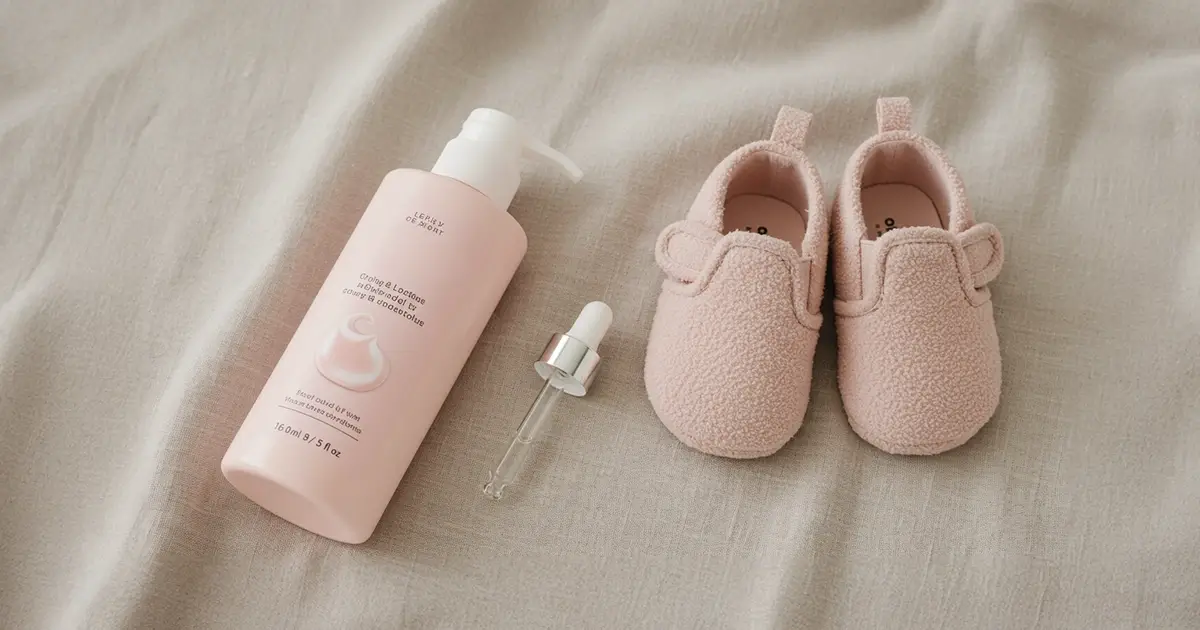Pregnancy changes the rules of skincare, but it should never cancel your ritual. Today I guide you through pregnancy-safe tweaks, explain which bottles need a break, and share gentle swaps that keep radiance steady.
Why Skincare Needs a Pregnancy Edit
The placenta is not a brick wall, some active molecules slip through, travel in the bloodstream, and can affect a developing baby. I think of pregnancy as the ultimate patch test: if an ingredient is controversial, we park it and reach for options with long safety track records.
Hormone spikes tilt skin balance: many future mums notice surprise breakouts or sudden melasma. Understanding that biology helps us curate formulas, not fight changes. It also limits frustration, because we know why that once trusty retinol no longer fits.
A 2024 review in the Journal of the American Academy of Dermatology lists topical retinoids, high-dose salicylic acid peels, and hydroquinone among ingredients best avoided during pregnancy. No alarm bells, just evidence-based caution.
Ingredients to Put on Pause
I keep a sticky note on the bathroom mirror during the first trimester so I never forget the red flag crew after a sleepy morning cleanse.
- Retinoids: vitamin A derivatives, from retinal to adapalene, show teratogenic risk in oral form, and topical data remain limited.
- High-strength salicylic acid (peels over 2 percent): linked to aspirin-like systemic exposure, so better safe than sorry.
- Hydroquinone: crosses the placenta easily, skip brightening serums that list it near the top.
- High-dose benzoyl peroxide: low strengths are fine, concentrated spot treatments above 10 percent feel too harsh on freshly fluctuating skin.
- Prescription acne pills and spironolactone: save oral options for the postpartum dermatology visit.
Mayo Clinic reminds mothers to be that low-concentration salicylic cleansers are acceptable, while peels and heavy masks should wait until after delivery.
Smart Swaps for a Healthy Glow
Now, here is the fun part: choosing replacements that feel decadent without anxiety. I build a routine around four reliable pillars, then season it with extras only if skin begs for variety.
For Brightening
Vitamin C at 10-15 percent, azelaic acid, niacinamide, and licorice extract keep pigment calm. They are pregnancy friendly according to ACOG. I spread an antioxidant serum every morning, allow it to dry, then follow with generous mineral sunscreen.
For Breakouts
Swap retinoids for a leave-on 2 percent azelaic lotion and a dab of 5 percent benzoyl peroxide. This combo cuts bacteria, reduces redness, and saves linens from bleach spots. If stubborn cysts linger, a short course of topical clindamycin prescribed by your dermatologist is another pregnancy approved tactic.
Building a Trimester by Trimester Routine
First trimester: Keep it minimal. A fragrance-free cleanser, broad-spectrum mineral SPF, and niacinamide at night do the heavy lifting while the embryo's organs form.
Second trimester: Hormonal breakouts often surge. Introduce azelaic acid and a lightweight hyaluronic serum for hydration if morning sickness left skin dull.
Third trimester: Skin may feel thirsty and itchy. Switch to a ceramide-rich cream, keep showers lukewarm, and try a weekly oatmeal mask while practising breathing exercises.
Sun Protection Strategies for Pregnant Skin
Ultraviolet light intensifies melasma, so sunscreen becomes your daily non-negotiable. I reach for zinc oxide formulas because they sit on the skin, they do not need to sink in to work.
Apply two finger lengths for the face and neck, then reapply every two hours if outdoors. A wide brim hat adds shade, and unlike that colleague who borrows pens, it never forgets to return the favour.
Late afternoon walks feel dreamy but remember that visible light and infrared still reach skin after 4 pm. Mineral SPF helps scatter those rays too, so do not stash the tube once the sun looks gentle.
Ingredient Label Reading 101
Start at the back: ingredients appear in descending order of concentration. If a red flag pops up within the first five lines, the product likely needs to hibernate until after birth. Scan for Latin names like hydroquinone rather than brand promises on the front.
Watch out for sneaky synonyms. Adapalene may hide under "Differin", retinol sometimes shows up as "vitamin A palmitate". Brands love to rename plain retinol as "rejuvenating complex", so always read the INCI list. A quick search on your phone in the store aisle beats post purchase regret.
Finally, trust certifications sparingly. Words like "natural" or "clean" are marketing, not medical guarantees. Ingredient literacy wins over slogans every time. Clear names beat glossy slogans every single time.
Extra Lifestyle Boosters That Show on Your Face
Sleep seems mythical in late pregnancy, still I aim for strategic naps to help barrier repair. During REM your skin's micro circulation jumps, and that translates to better tone by breakfast. For a refresher on arranging formulas, here is my thin to thick cheat sheet.
Hydration is not only water. I sip infused water with citrus and mint because mild flavour nudges me to finish the glass. Adequate fluid intake also keeps that gummy pregnancy constipation in check. Two birds, one bottle!
Stress hormones can trigger inflammation. I follow ten minutes of guided meditation before bed. A study at the University of Queensland linked mindfulness practice to reduced epidermal water loss in expectant mothers, so the habit feels doubly motivating.
Postpartum Transition Tips
Once the little one arrives, hormones drop like a roller coaster. Expect temporary dryness and possible shedding, also called telogen effluvium. To help skin recover, keep the barrier routine steady for at least six weeks before reintroducing stronger actives.
If nursing, most dermatologists allow retinaldehyde or low strength retinol because systemic absorption is tiny. I still run every new tube past my paediatrician, peace of mind fuels better sleep than chamomile tea.
Use a simple spreadsheet or a notes app to track each reintroduced product. That way, if irritation flares, you know which newcomer may be guilty without cross examining your sleep deprived memory.
Common Skin Conditions in Pregnancy and Safe Relief
Acne steals headlines, yet pregnancy can bring eczema flares, heat rashes, and the famously itchy PUPPP. Most steroid creams are class B, which means they have not shown risk in animal studies, but I still limit use to small patches and the shortest duration that brings comfort.
Eczema often perks up with thicker emollients. I grab a petrolatum based ointment at night, then layer a cotton T-shirt over pyjamas to avoid sticking sheets. During the day, a colloidal oat lotion settles redness without the medicinal scent that haunted older formulations.
PUPPP arrives late in pregnancy, usually on the belly, and can feel as dramatic as its full name: pruritic urticarial papules and plaques of pregnancy. Cool showers, loose clothing, and an over the counter topical antihistamine often ease the urge to scratch. Discuss oral options with your obstetrician if sleep suffers.
Mental Health and Skin Connection
Skincare chatter often overlooks the brain, yet cortisol is a direct neighbour of collagen in the body's communication network. Elevations in stress hormones slow wound healing and thin the epidermis, so a calm mind is the cheapest serum on your shelf.
I schedule micro breaks: five deep breaths after every email batch, one silly dance when the kettle boils. That movement bumps endorphins, improves circulation, and gives my toddler kicking inside an impromptu concert.
Community also matters. Whether you join a prenatal yoga class or chat in the comments here, social support lowers perceived stress. A 2023 study in Psychosomatic Medicine linked peer connection to reduced inflammatory markers in pregnant women, a finding I happily borrow when I host virtual tea sessions with friends.
Shopping Tips to Keep Budget and Safety Aligned
Beauty aisles sparkle with promises, yet pregnancy often reshuffles finances. I buy travel sizes first, that way a patch test covers three nights rather than thirty, and I avoid a graveyard of half empty jars.
Check manufacture dates. Active ingredients lose potency over time, and a weak vitamin C will not fight pigment. Many tubes hide the PAO symbol – a little open jar with a number beside it – which tells you how long the formula lasts after opening.
Finally, keep receipts. Some retailers offer thirty day returns even on gently used skincare. A polite chat at the counter often secures a refund or credit, and those savings pay for fresh nappies or another jar of peanut butter for midnight toast.
Safe Spa and Salon Services
A spa afternoon feels blissful when ankles look like puff pastries. Still, choose treatments thoughtfully. Skip hot stone massages and high heat saunas because core temperature spikes can stress a growing baby.
Facials are fine if the therapist avoids electrical devices and high strength acids. I book a calming session with steam swapped for warm compresses, then drift into a nap while chamomile scented towels lull me. Ask whether the esthetician can swap steam for a warm compress, which feels equally pampering but keeps core temperature stable.
Hair dye sparks endless debate, yet most obstetricians approve ammonia free, semi-permanent formulas after the first trimester. Ask for a well ventilated chair and remind the colourist to avoid direct scalp contact. Semi-permanent colour molecules are larger, therefore even less likely to penetrate deeply, which offers extra reassurance during a time when peace of mind is priceless. If in doubt, schedule a patch test behind the ear and wait forty-eight hours before a full root touch up.
FAQ
Can I still exfoliate while pregnant?
Yes, but stick to lactic acid or gentle enzyme powders twice a week. Skip high percentage glycolic or aggressive scrubs.
Is sunscreen absolutely necessary indoors?
Mineral SPF protects against pigment worsening visible light coming through windows. I use zinc oxide daily, rain or shine.
Are essential oils safe?
Most essential oils lack robust safety data for pregnancy. Keep them in a diffuser, not a leave on serum.
What helps sudden melasma?
Combine daily mineral sunscreen, 10 percent vitamin C, and azelaic acid. Prescription treatments wait until after birth.
Can I restart retinoids when nursing?
Topical retinoids appear in minimal breast milk. Many dermatologists approve retinaldehyde once lactation is established. Always confirm with your paediatrician.
Do I need a separate eye cream?
No, the skin around eyes is thin but a fragrance-free moisturiser can double as eye care. Save pennies for nappies.
Conclusion
A strategic pregnancy routine protects your baby and your barrier at the same time, it does not sacrifice self care. Choose evidence backed swaps, read labels twice, and celebrate each trimester with textures that feel good.
Have a question or a pregnancy tip that kept your skin calm? Share it below, I would love to chat. See you in the next post. Until then, take good care of your skin!


Comments (0)
No comments yet - be the first to share your thoughts!
Leave a Reply
Your email address will not be published. Required fields are marked *